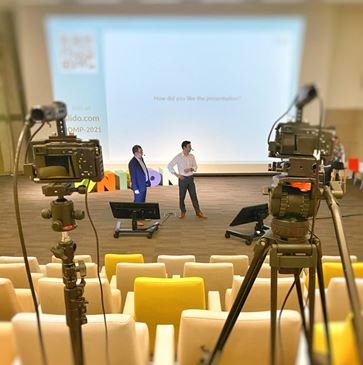Creating successful multimedia projects involves more than just putting together text, images, and videos. It requires a thoughtful approach to design, content, and audience engagement. Here are the key elements to consider for making your multimedia projects stand out.

Clear Objectives
Define Your Goals
Before starting, clarify the objectives of your multimedia project. What do you want to achieve? Whether it’s informing, entertaining, or persuading, having clear goals will guide every aspect of your project.
Understand Your Audience
Knowing your audience is crucial. Identify their preferences, needs, and expectations. Tailor your content to meet these needs, ensuring that your project resonates with them.
Engaging Content
Craft a Compelling Narrative
A successful multimedia project tells a story. Develop a narrative that captures attention and maintains interest. Ensure that your story has a clear beginning, middle, and end to keep your audience engaged.
Use High-Quality Media
The quality of your media elements significantly impacts your project’s success. Use high-resolution images, clear audio, and well-edited videos. High-quality media enhances professionalism and audience satisfaction.
Effective Design
Maintain Consistency
Consistency in design is key to a successful multimedia project. Use a cohesive color scheme, font style, and layout throughout your project. This consistency helps create a unified and professional appearance.
Optimize for Usability
Design with your audience in mind. Ensure that your multimedia elements are easy to navigate and interact with. User-friendly design improves engagement and helps achieve your project goals.
Interactive Elements
Incorporate Interactive Features
Interactive elements, such as clickable buttons and quizzes, can boost engagement. Allowing users to interact with your content makes the experience more immersive and memorable.
Enable User Participation
Consider features that allow user participation, like comment sections or polls. These elements can increase engagement and provide valuable feedback for future improvements.
Technical Performance
Ensure Compatibility
Your multimedia project should be compatible with various devices and browsers. Test your project across different platforms to ensure it functions smoothly and looks good everywhere.
Optimize Loading Times
Slow loading times can frustrate users. Optimize your media files and design elements to ensure quick loading. This optimization is essential for maintaining a positive user experience.
Regular Updates
Keep Content Fresh
Update your multimedia project regularly to keep it relevant and engaging. Fresh content can attract new users and retain the interest of existing ones.
Review and Refine
Periodically review your project’s performance and gather feedback. Use this information to make improvements and ensure your project continues to meet its objectives.
Conclusion
In summary, successful multimedia projects are defined by clear objectives, engaging content, effective design, interactive elements, and technical performance. Regular updates and refinements further ensure long-term success. By focusing on these key elements, you can create multimedia projects that captivate and connect with your audience effectively.











